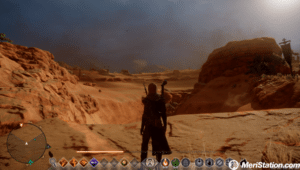When Dragon Age: OriginsHe appeared as the savior of a type of RPG that was no longer done, let alone on that scale. The genre had been turning in the direction of the individual game in first or third person, with a more or less marked component of direct action. Group management and tactical combat were rare within the limited range of Western role-playing games of the time.
The Bioware project had been presented and sold as a return to the essence of Baldur’s Gate, an ambitious project in which many years had been invested only in the construction of a world of its own and its history.
The result was a great triumph, an epic and huge game with an epic story and characters at the level of what is expected of the Canadian studio, all seasoned by a combat endowed with that touch of tactics and planning that were missing in another class of bets of the genre. Excellent reviews, good sales and the fervor of a large community were his reward for a job well done.
In the midst of much expectation the second part would arrive, although much earlier than expected given the time of development of the first. It was a completely different story, set in a different part of the world: The Free Marches, and specifically
Kirkwall, the infamous “City of the Chains”, one of the great known ports of Thedas. Their objectives were very different as a project in line with an unavoidable
circumstance: a very demanding period of development -it has been unofficially aimed at a year of production-. The first Dragon Age had been seven years in the kitchen between its different phases, and apparently it was demanded that the sequel came out fast to get more performance to the newly created series.
It opted for a more concentrated and local history, centered on the city and with few excursions abroad, in addition to changing the combat system of Origins to something more direct that homogenized the versions of PC and consoles, something that the first game had not accomplished. The result was a game that, in spite of its triumphs – that has them, particularly in narrative and especially in characters – was the shadow of its predecessor.
With the name of the damaged series, BiowareI needed a bang on the table if I did not want to see the universe that I had worked so hard to die in. I needed something spectacular that would serve to apologize and a new opportunity, also to demonstrate that they were still that studio capable of launching the most impressive RPGs within the commercial sector.
This time there have been no compromises: the game has had a long development cycle of more than four years, a change of engine to embrace
Frostbite in line with most of the studies within EA and a vibrant promotion process in which he has taught the game as active and passive – some have had to stop seeing promotional material because it seemed that they were going to see all the scenarios of the games before they could touch it. The result is a really spectacular, dedicated and generous work

